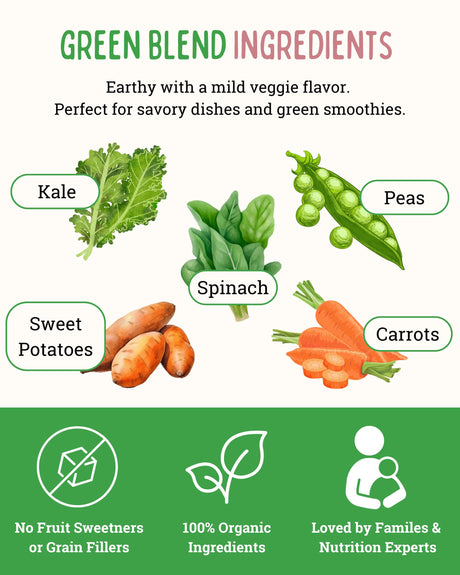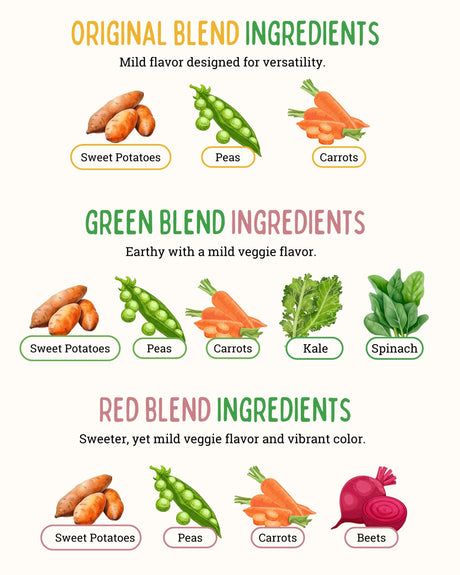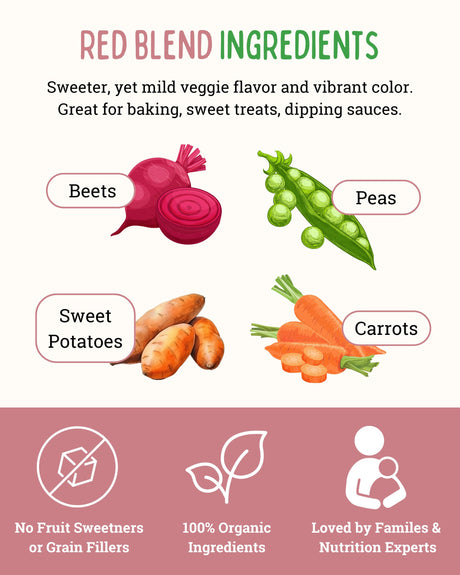Embracing the Holiday Spirit and Its Culinary Delights
As the holiday season rolls in, it brings with it a magical atmosphere filled with joy, family gatherings, and, of course, an array of delicious culinary traditions. From gingerbread houses to candy canes, the holidays are synonymous with treats that delight both young and old. These traditions, passed down through generations, add to the richness of our festive celebrations.
Navigating the Sweet Challenge
However, with these delightful treats comes a challenge for parents: balancing the excitement and indulgence of holiday sweets with the need for healthy eating habits in children. The abundance of sugary snacks and desserts can make it tricky to maintain a nutritious diet, especially for kids who eagerly await these seasonal goodies.
A Guide to Healthy Holiday Indulgences
Recognizing this challenge, our blog aims to provide practical and effective strategies for managing treats and sweets during the holiday season.
We'll explore ways to enjoy the festive flavors while also keeping a keen eye on nutrition, ensuring that kids can partake in the joy of the season without compromising their health. Let's dive into a world where holiday treats meet mindful eating, creating a balance that can be both fun and beneficial for the whole family.

Understanding the Appeal of Sweets
The Sweet Attraction: A Child's Perspective
It's no secret that children have a natural inclination towards sweets. This preference isn't just about taste; it's deeply rooted in biology. From a nutritional standpoint, children's bodies are growing rapidly, requiring energy that they instinctively seek from sweet foods. Sugar, being a quick source of energy, naturally appeals to their developing taste buds and energy needs.
Sugar's Festive Role in Holiday Cuisine
During the holidays, sugar takes center stage in many traditional recipes. From frosted cookies to chocolate delights, sugar is a key ingredient that adds to the festive cheer. These treats are not just about taste; they're embedded in our holiday rituals and memories, making them an integral part of seasonal celebrations.
Striking a Healthy Balance
The challenge during the holiday season is finding a balance between the joy of these sweet traditions and maintaining a nutritious diet. It's about understanding that while sugar can be part of our festive enjoyment, it shouldn't overshadow the importance of a balanced, healthy diet. This holiday season, let's explore how we can embrace the sweetness while also nurturing our children's health and well-being.
Setting Realistic Expectations
Embracing Moderation Over Deprivation
When it comes to holiday treats, the key is moderation, not deprivation. Completely restricting sweets can often lead to an unhealthy obsession with these forbidden foods, especially in children.
Instead, focus on teaching kids the value of enjoying treats in moderation. This approach helps them develop a healthier relationship with food, understanding that while sweets are enjoyable, they are just one part of a varied diet.
Cultivating a Balanced Holiday Eating Mindset
Holidays are a time of indulgence, but they also offer an opportunity to instill a balanced mindset about eating. Encourage children to savor and enjoy holiday treats without overindulging.
This can be achieved by emphasizing the enjoyment of flavors and the experience of eating, rather than the quantity of food consumed. It's about finding joy in both the special holiday treats and the nutritious meals that fuel their bodies.
Empowering Kids to Set Healthy Limits
Involvement is key when it comes to setting boundaries around holiday eating. Engage children in conversations about healthy eating habits and let them have a say in their own food choices.
This can include deciding together on the number of treats they can have each day or letting them choose which holiday sweets they'd like to enjoy. By involving kids in these decisions, they learn to listen to their bodies and make choices that balance pleasure with health.
Healthy Alternatives to Traditional Treats
Crafting Healthier Holiday Treats
The holiday season doesn't have to mean giving up on healthy eating. With a little creativity, you can whip up delicious treats that are also nutritious. Think about recipes that incorporate fruits, nuts, whole grains, and natural sweeteners.
For instance, oatmeal cookies with dried cranberries and dark chocolate chips, or homemade granola bars with festive spices. These alternatives not only satisfy the sweet tooth but also provide valuable nutrients.
Ingredient Swaps for Better Nutrition
One of the simplest ways to make holiday treats healthier is by swapping out certain ingredients. Use whole wheat flour instead of refined flour, applesauce or mashed bananas in place of some of the butter or oil, and honey or maple syrup instead of refined sugar. These swaps can significantly reduce the calorie count and increase the nutritional value of your treats, without compromising on taste.
Fostering a Taste for Healthier Options
Introducing kids to healthier treats can be a fun and rewarding experience. Encourage them to be part of the baking process, letting them help with measuring, mixing, and even choosing ingredients.

This involvement can pique their interest in trying the finished product. Remember, it might take a few tries for kids to develop a taste for these healthier options, so be patient and keep experimenting with different recipes and flavors.
Navigating Holiday Parties and Gatherings
Handling Treats at Social Events
Holiday parties and gatherings are often filled with tempting treats, making it a real challenge to stick to healthier eating habits. To navigate this, consider eating a nutritious meal before attending a party.
This can help reduce the temptation to overindulge in sweets. Also, you can bring a healthy dish to share, ensuring there's at least one healthier option available. Encourage kids to enjoy treats in moderation, balancing them with healthier snacks.
Empowering Kids to Make Healthier Choices
Teaching kids to make healthier choices at parties is crucial. Discuss with them beforehand about the importance of balance in their diet. Encourage them to fill their plates with fruits, vegetables, and other nutritious foods along with the occasional treat. This not only helps them maintain a balanced diet but also instills lifelong healthy eating habits.
Managing Peer Pressure and Temptations
Dealing with peer pressure, especially for kids, can be tough during the holiday season. It's important to have open conversations with your children about peer pressure related to food. Teach them that it's okay to say no to treats and to listen to their bodies.
If they're full or don't feel like having a sweet, they should feel comfortable making that choice. Also, remind them that indulging in treats is okay occasionally and should be enjoyed without guilt.
The Role of Parents and Caregivers
Leading by Example: Healthy Eating Habits for the Whole Family
Parents and caregivers play a pivotal role in shaping children's eating habits, especially during the holiday season. By leading by example, you can significantly influence your child's food choices.
This means choosing healthier options for yourself, demonstrating moderation, and enjoying treats without guilt. When children see their parents making balanced food choices, they are more likely to emulate these behaviors.

Communicating with Kids About Healthy Eating
Open and honest communication about healthy eating is essential. Discuss with your children why certain foods are healthier than others and how they affect our bodies. Make these conversations age-appropriate and engaging.
Use the holiday season as an opportunity to talk about balance and moderation in diet. Explain that while it's okay to enjoy holiday treats, it's also important to eat foods that nourish and energize our bodies.
Creating a Supportive Environment for Healthy Choices
Creating an environment that supports healthy eating is key. This includes having a variety of healthy foods available at home, especially during the holiday season.
Involve your children in meal planning and grocery shopping, letting them pick out fruits, vegetables, and other nutritious foods they enjoy. Encourage them to help in the kitchen, making healthy holiday treats together. By involving kids in these processes, they feel empowered and more interested in trying and enjoying healthier foods.
Mindful Eating During the Holidays
Teaching Kids to Listen to Their Bodies
The holiday season is an excellent time to teach children about mindful eating, starting with listening to their bodies. Encourage your kids to pay attention to how they feel before, during, and after eating.
Help them understand the difference between eating out of hunger and eating out of boredom or emotion. This awareness can lead to healthier eating habits and a better relationship with food.
The Importance of Eating Slowly and Mindfully
Eating slowly and mindfully is another crucial aspect of mindful eating. Teach your children to savor each bite and enjoy the flavors and textures of their food. This practice not only enhances the eating experience but also helps in better digestion and satisfaction with smaller portions. During holiday meals, remind your kids to take their time, chew thoroughly, and truly appreciate the special treats and meals.
Recognizing and Responding to Hunger and Fullness Cues
Helping children recognize and respond to their body's hunger and fullness cues is essential for mindful eating. Teach them to eat when they're hungry and stop when they're comfortably full, rather than eating until they're stuffed.
Encourage them to take breaks during meals to assess whether they are still hungry. This practice can prevent overeating and promote a healthy relationship with food, especially during a season filled with abundant treats and large meals.
Managing Sweets in the Home
Tips for Stocking Healthier Options at Home
Creating a healthy home environment starts with what we stock in our pantries and refrigerators. To manage sweets effectively, focus on filling your home with healthier snack options. Opt for fruits, nuts, yogurt, and whole-grain snacks that are not only nutritious but also satisfying.
When you have these healthier alternatives readily available, it's easier to curb the temptation for high-sugar treats. Remember, it's about finding a balance that allows for occasional indulgences without overdoing it.

Limiting Access to High-Sugar Snacks
While completely banning sweets may not be realistic or beneficial, setting limits can be a healthy approach. Keep high-sugar snacks as occasional treats rather than everyday staples.
This doesn't mean you can't have them in the house, but perhaps keep them out of immediate sight or in a less accessible place. Teach your children that these are special treats to be enjoyed occasionally, not daily habits. This approach can help in developing a healthy attitude towards sweets and treats.
Creative Ways to Present Healthy Snacks
Presentation can make a world of difference, especially when it comes to encouraging kids to eat healthier snacks. Get creative with how you present fruits, vegetables, and other healthy options.
Think of fun shapes, colorful arrangements, and interactive snack ideas like fruit skewers or veggie dips. Making healthy snacks visually appealing and fun to eat can significantly increase their attractiveness to children. This way, you turn snack time into both a nutritious and enjoyable experience for your kids.
After the Holidays: Continuing Healthy Habits
Transitioning from Holiday Eating to Everyday Nutrition
As the festive season winds down, it's important to gently shift the focus back to everyday nutrition. This transition can be a great opportunity to reflect on the holiday eating experiences and gradually reintroduce a more routine dietary pattern.
Encourage your family to start incorporating more of the everyday healthy foods they enjoy, while still allowing for the occasional treat. This balanced approach helps in avoiding the post-holiday guilt and supports a smooth transition back to normal eating habits.
Maintaining a Balanced Diet Post-Holidays
The end of the holiday season doesn't mean an end to good eating habits. In fact, it's an ideal time to reinforce the importance of a balanced diet. Continue to offer a variety of foods from all food groups, emphasizing fruits, vegetables, whole grains, lean proteins, and healthy fats.
Engage your children in meal planning and preparation, making it a fun and educational activity. This involvement not only educates them about nutrition but also helps them develop a lifelong appreciation for healthy eating.
Reflecting on Holiday Eating and Learning for the Future
Reflection is a powerful tool in learning and growth. Take some time with your family to discuss what went well and what could be improved in terms of holiday eating. Were there new healthy recipes that everyone loved? Did certain strategies help in managing sweets effectively?
Use these reflections to plan for future holidays and celebrations. By learning from past experiences, you can continue to refine your approach to balancing enjoyment with nutrition, ensuring that each holiday season is both joyful and health-conscious.
Recap of Key Strategies for Managing Treats and Sweets
As we wrap up our discussion on navigating the sweet-filled holiday season, let's revisit the key strategies we've explored. Remember, moderation is the mantra when it comes to treats and sweets. We've talked about setting realistic expectations, finding healthier alternatives to traditional holiday treats, and navigating social gatherings with a health-conscious mindset.
We've also emphasized the importance of parental guidance, mindful eating, and managing sweets at home. These strategies are not just about limiting sugar intake; they're about fostering a healthy relationship with food in our children.
Encouraging a Balanced Approach to Holiday Eating
The holiday season is a time of joy, celebration, and yes, delicious food. It's important to remember that indulgence is a part of life and can be enjoyed in a balanced way. Encourage your children to savor and enjoy their favorite treats without overindulgence.
Teach them to listen to their bodies and enjoy food as a part of the celebration, not the sole focus. This balanced approach to holiday eating can help instill healthy eating habits that last well beyond the festive season.
Invitation for Readers to Share Their Holiday Health Strategies
Now, I'd love to hear from you! How do you manage treats and sweets during the holiday season in your family? Do you have any special traditions or recipes that strike that perfect balance between health and indulgence?
Share your strategies, experiences, and even your favorite holiday recipes in the comments below or #easypeasie. Let's learn from each other and make this holiday season not only merry and bright but also healthy and delightful!













